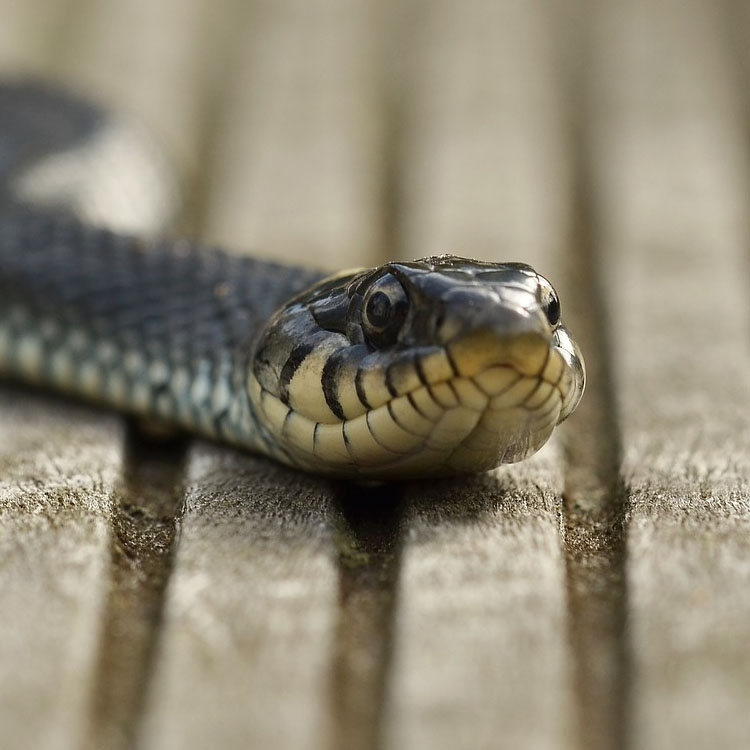Snake Poop Identification
Since snakes do not eat plants, they do not have a lot of fiber in their system so their feces tends to be mushier than animals who eat more fiber. Contrary to popular belief, snake droppings are not long and thin, they are actually thick. When it is fresh, droppings are a dark brown in color, however it will turn a lighter color with age. Since snakes also urinate from the same hole, the urine is mixed in with the feces; this is what gives the white color inside of snake droppings that you may find.
Snake droppings are often pretty difficult to identify, and that’s if you can find them. Snakes do not use the latrine system, meaning that they leave their droppings wherever they happen to fall, there is no rhyme or reason. Snakes will poop once per meal, so depending on the species and what they are eating depends on the regularity of droppings. Snake droppings have the potential to carry bacteria such as salmonella, so if you are coming into contact with it, you must wear protective materials.

While you may not be able to find snake droppings very easily, if you have a snake in your yard you may be able to find a snake skin. This can be startling at first, as snakes shed their skin all at once, so the skin will look like a whole snake. If you have a younger snake that is still growing rapidly, you may find more skins than if you have an older snake who has already matured. Younger snakes can shed every couple of weeks to accommodate for their growing body, while mature snakes will shed up to four times a year.
Snakes may also on occasion find their way into your home, so if you are finding snake droppings or snake skins inside your home this could be a sign that a snake has found its way inside. Snakes will often try to get into your home if you are experiencing rodent issues, as this is a constant food source for them. So if you find evidence of snakes, you may want to look for rodent evidence as well.